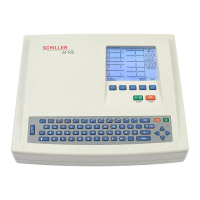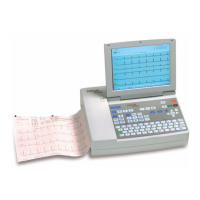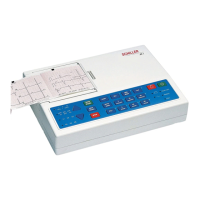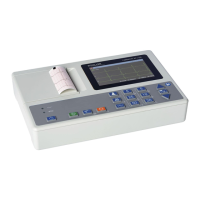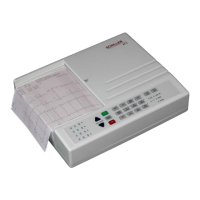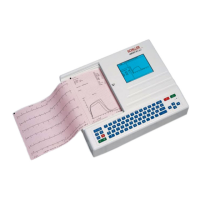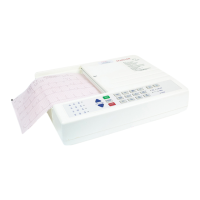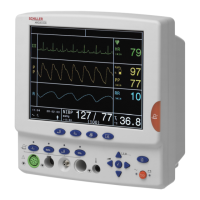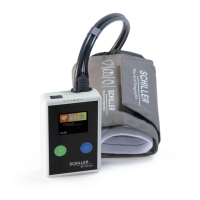Do you have a question about the Schiller AT-101 and is the answer not in the manual?
Defines user responsibilities for operation and repair, and specifies the device's purpose and patient applicability.
Covers organizational measures, safety-conscious operation, and precautions against hazards like electrical shock.
Highlights the importance of fuses, cables, approved accessories, and patient safety distance.
Explains safety symbols used in the manual and outlines warranty terms and conditions.
Lists standard and optional features of the AT-101 ECG device, including its ergonomic design.
Identifies the main physical components and describes the connections available on the back panel.
Explains the AT-101's keypad layout, softkey functions, and how to initiate tasks.
Describes the information displayed on the AT-101's LCD screen and its layout during operation.
Guides on connecting the device, power supply, battery operation, and initial preparation steps.
Details battery operation, switching the unit on/off, and adjusting LCD contrast.
Instructions for accessing setup menus and configuring ECG recording parameters.
Details automatic formats, filters, interpretation, and lead settings for ECG acquisition.
Defines lead sequence, general settings, and auto-storage for ECG recordings.
Steps to access system settings and configure unit-specific options like language and paper type.
Setup for data communication, including baud rate, modem, phone number, and transmission procedures.
Procedures for software updates, upgrades, and resetting to default configurations.
Outlines recommended service intervals, safety notes, and handling precautions for the AT-101.
Covers internal/external visual checks, LED, power supply, keyboard, and LCD screen tests.
Details tests for power supply, mains LEDs, keyboard, and LCD screen functionality.
Tests for paper feed, print quality, printing speed, and parallelism of the thermal printer.
Tests for printer head parallelism and ECG amplifier signal accuracy.
Procedures to test the ECG lead and patient cables for signal integrity and proper connection.
Procedures for testing external printer functionality and RS-232 serial port communication.
Guidelines for executing safety tests as per relevant international standards.
Details battery charging, testing, replacement, and disposal procedures.
Instructions for changing fuses, adjusting mains voltage, and cleaning device components.
Instructions for replacing paper, handling thermal paper, printer replacement, and fault-finding.
Technical details of the AT-101 system, including dimensions, power, printer, and environmental conditions.
Detailed technical data related to the ECG input, leads, printout, filters, and amplifier.
Lists the safety, EMC, and conformity standards followed by the AT-101 device.
Illustrates the printer's mechanical parts and provides part numbers for reference.
Shows internal views of the AT-101 components and details their cabling connections.
Contains electrical diagrams for the power supply circuit of the AT-101.
Shows the physical placement of components on the AT-101 circuit boards.
| Display | LCD |
|---|---|
| Printing | Thermal printer |
| Battery Type | Rechargeable battery |
| Operating Temperature | 10°C to 40°C |
| Type | Portable |
